Pranic Healing is a holistic healing modality developed by Grandmaster Choa Kok Sui that utilizes prana, or life force energy, to balance, harmonize, and transform the body’s energy processes. It operates on the principle that the body has the innate ability to heal itself, and by removing energetic blockages and imbalances, the healing process can be accelerated.
The practice of Reiki originates from Japan and aims to reduce stress and promote relaxation. It operates by having the practitioner channel universal life force energy through their hands, which promotes healing. The term “Reiki” is made up of two Japanese words: “Rei,” meaning spiritual or universal, and “Ki,” meaning life force energy. The combined meaning of the term Reiki is “universal life force energy.”
Contents
- 1 Understanding Reiki
- 2 Incorporating Reiki into Daily Life
- 3 Pranic Healing vs. Reiki
- 4 The Five Pillars of Reiki
- 5 Frequency of Reiki Practice
- 6 Understanding the Effects of Regular Reiki Practice
- 7 Exploring Pranic Healing vs. Reiki for Mental Wellness
- 8 Potential Disadvantages of Reiki
- 9 Signs that Reiki is Working
- 10 Importance of Self-Reiki
- 11 Daily Reiki Rituals
- 12 The 21-Day Reiki Challenge
- 13 Balancing Reiki Practice
- 14 Activating Reiki Symbols
- 15 FAQs
- 16 Conclusion
Understanding Reiki
The foundation of Reiki lies in the notion that a life force energy courses through all living beings, and any disruptions in this energy can cause physical or emotional imbalances. In a Reiki session, the practitioner serves as a conduit for this healing energy, guiding it towards the recipient’s body to reestablish balance and encourage healing.
The practice of Reiki is grounded in five principles, often referred to as the Reiki Principles or Reiki Precepts, which serve as guiding principles for practitioners. These principles include:
- Just for today, I will not be angry.
- Just for today, I will not worry.
- Just for today, I will be grateful.
- Just for today, I will do my work honestly.
- Just for today, I will be kind to every living thing.
By embodying these principles, practitioners cultivate mindfulness, compassion, and balance, enhancing the effectiveness of the Reiki healing energy.
Incorporating Reiki into Daily Life
Incorporating Reiki into daily life doesn’t have to be complicated. Simple practices such as self-Reiki, Reiki meditation, and Reiki-infused affirmations can be easily integrated into your daily life. For example, you can start your day with a brief self-Reiki session to set the tone for a positive and energized day, or you can end your day with a Reiki-infused meditation to promote relaxation and restful sleep.
Pranic Healing vs. Reiki
While Pranic Healing and Reiki are effective forms of energy healing, they differ in their techniques and approaches. Pranic Healing focuses on cleansing and energizing the energy body by removing stagnant or diseased energy and replacing it with fresh, vital energy. This is often done through specific hand movements and visualizations.
Reiki, on the other hand, relies on the transmission of universal life force energy through the hands of the practitioner without the need for physical manipulation of energy. Reiki practitioners channel this healing energy to the recipient, allowing it to flow wherever it is needed most for healing and balance. Want to know which one is a better choice? Read our blog:
Reiki and Pranic Healing: Which is Right for You?
The Five Pillars of Reiki
The five pillars of Reiki—Gassho, Reiji-Ho, Chiryo, Koki-Ho, and Gyoshi-Ho—serve as foundational principles for Reiki practitioners. These pillars encompass various aspects of the Reiki practice, including meditation, intention setting, hands-on healing, and distant healing. By incorporating these pillars into their practice, practitioners can deepen their connection with the healing energy and enhance their ability to facilitate healing for themselves and others.
Frequency of Reiki Practice
The frequency of Reiki practice can vary depending on individual needs and preferences. Some practitioners may benefit from daily Reiki sessions; others may find weekly or monthly treatments sufficient. It’s essential to listen to your body and honor its needs when determining how often to practice Reiki. Regular self-reiki sessions help maintain balance and well-being. At the same time, periodic treatments from a qualified practitioner can provide additional support and healing when needed.
Understanding the Effects of Regular Reiki Practice
Regular Reiki practice can profoundly affect physical, emotional, and spiritual well-being. Many practitioners report feeling more relaxed, balanced, and centered after a Reiki session, with reduced stress, anxiety, and pain. Regular practice can also enhance one’s intuition, spiritual awareness, and overall connection with oneself and others.
Exploring Pranic Healing vs. Reiki for Mental Wellness
Reiki and Pranic Healing offer profound benefits for mental wellness. Both modalities work on restoring balance and harmony to the body’s energy system, which positively impacts mental health. Through gentle touch or energy manipulation, Reiki and Pranic Healing help release stagnant energy, reduce stress, and promote relaxation. This release of tension and stress can alleviate symptoms of anxiety, depression, and other mental health issues.
Moreover, these practices facilitate emotional healing by addressing underlying energetic imbalances that may contribute to mental distress. Regular Reiki or Pranic Healing sessions can enhance clarity of mind, improve emotional resilience, and foster a sense of inner peace and well-being, ultimately supporting overall mental wellness and vitality. Read our latest blog to learn more:
Exploring Pranic Healing vs. Reiki for Mental Wellness
Potential Disadvantages of Reiki
While Reiki is generally safe and non-invasive, it’s essential to be aware of potential drawbacks or side effects that may arise during or after a Reiki session. Some individuals may experience temporary discomfort or emotional release as blocked energy is cleared and released from the body.
Others may feel tired or lightheaded as their energy field adjusts to the influx of healing energy. These effects are usually temporary and can be mitigated through proper self-care, grounding techniques, and communication with the practitioner.
Signs that Reiki is Working
Signs that Reiki is working may vary from person to person. Still, common indicators include sensations of warmth or tingling, deep relaxation, emotional release, and accelerated healing. Some individuals may also experience vivid dreams, heightened intuition, or a sense of clarity and insight after a Reiki session. Trusting your intuition and paying attention to subtle shifts in your energy can help you recognize the effectiveness of Reiki and its impact on your overall well-being.
Importance of Self-Reiki
Practicing Reiki oneself is essential for maintaining balance and well-being, as it allows practitioners to connect with their energy and address any imbalances or blockages that may be present. Self-Reiki sessions can be simple and intuitive, involving placing hands on various body parts and allowing the healing energy to flow where needed most. Regular self-Reiki practice can also deepen one’s relationship with the healing energy and promote self-awareness, self-love, and self-care.
Daily Reiki Rituals
Creating daily rituals around Reiki can help integrate its healing energy into your life effortlessly. Whether starting your day with a Reiki-infused meditation, blessing your food and water with Reiki energy before consuming it, or ending your day with a self-Reiki session, establishing a routine can foster a sense of connection, mindfulness, and gratitude throughout the day. These simple rituals can serve as anchors for your Reiki practice, reminding you to stay present, centered, and aligned with the healing energy of Reiki.
The 21-Day Reiki Challenge
The 21-day Reiki challenge is a powerful way to kickstart your Reiki practice and experience its transformative effects firsthand. Committing to daily self-treatment for 21 consecutive days can cultivate discipline, deepen your understanding of Reiki, and lay the foundation for long-term healing and growth. The challenge provides an opportunity to explore different aspects of your practice, observe changes in your energy and well-being, and develop a deeper connection with the healing energy of Reiki.
Balancing Reiki Practice
While Reiki can be incredibly beneficial, it’s essential to maintain balance and avoid overindulgence. Too much Reiki can disrupt the body’s natural energy flow and lead to energetic imbalances or overwhelm. Finding a healthy balance between giving and receiving Reiki is key to maximizing its benefits and avoiding burnout. Practicing self-awareness, setting boundaries, and listening to your body’s signals can help you maintain equilibrium and ensure your Reiki practice remains sustainable and nourishing.
Activating Reiki Symbols
Reiki symbols are sacred tools practitioners use to enhance their Reiki practice and facilitate deeper physical, emotional, and spiritual healing. Each symbol has its unique vibration and purpose, and practitioners can activate them through visualization, intention, or invocation. By working with Reiki symbols, practitioners can amplify the flow of Reiki energy, focus their intentions, and access deeper levels of healing and transformation. Common Reiki symbols include the Cho Ku Rei (power symbol), Sei He Ki (mental/emotional symbol), and Hon Sha Ze Sho Nen (distance symbol), among others.
FAQs
Start by setting aside time each day for self-Reiki practice. You can also infuse everyday activities with Reiki energy by simply intending to do so. Remember that consistency is key, so try to incorporate Reiki into your daily routine in a manageable and sustainable way.
There are many ways to use Reiki daily, from self-treatment to sending Reiki to your food or water, blessing your home or workspace with Reiki energy, and even using Reiki to support your goals and intentions. Experiment with different techniques and see what resonates with you
Practicing Reiki daily can have many benefits, including reduced stress, increased relaxation, improved sleep, enhanced emotional well-being, and greater overall vitality. Over time, regular Reiki practice can help you feel more balanced, centered, and connected with yourself and the world around you.
Pranic Healing and Reiki are effective forms of energy healing, and the choice between them depends on individual preferences, needs, and goals. Some people may resonate more with the techniques and philosophy of Pranic Healing. In contrast, others may prefer the gentle, hands-on approach of Reiki. Ultimately, exploring both modalities and seeing which one feels right for you is essential.
The five pillars of Reiki—Gassho, Reiji-Ho, Chiryo, Koki-Ho, and Gyoshi-Ho—are fundamental principles that guide Reiki practitioners in their practice. These pillars encompass various aspects of the Reiki experience, from meditation and intention setting to hands-on healing and distant healing. By incorporating these pillars into your Reiki practice, you can deepen your connection with the healing energy and enhance your ability to facilitate healing for yourself and others.
Conclusion
In conclusion, integrating Pranic Healing and Reiki into daily life can be a transformative journey toward greater health, happiness, and spiritual growth. By incorporating simple practices and rituals into your routine, you can harness the power of these ancient healing modalities to create a life of balance, harmony, and vitality. Pranic Healing and Reiki are effective methods to address physical pain, emotional stress, or spiritual disconnection, helping you restore wholeness and align with the universe’s healing energy.
Start a transformative journey towards healing and inner peace with Yrma Wilson‘s Reiki and Pranic Healing Service and . Whether you’re grappling with physical ailments or emotional burdens or simply seeking a deeper sense of well-being, Yrma’s expert guidance through the gentle power of Reiki offers a sanctuary for your healing journey. With years of experience and a compassionate approach, she creates a personalized healing experience that caters to your unique needs, promoting balance, harmony, and wellness at every level of your being.
Don’t let stress, pain, or imbalance hold you back. Discover the profound benefits of Reiki and how it can enhance your life in ways you never imagined. Visit Yrma Wilson’s Reiki Healing Service today to schedule your session and take the first step toward a healthier, happier you because you deserve to live a life filled with peace, vitality, and joy. Let Yrma Wilson guide you there.


